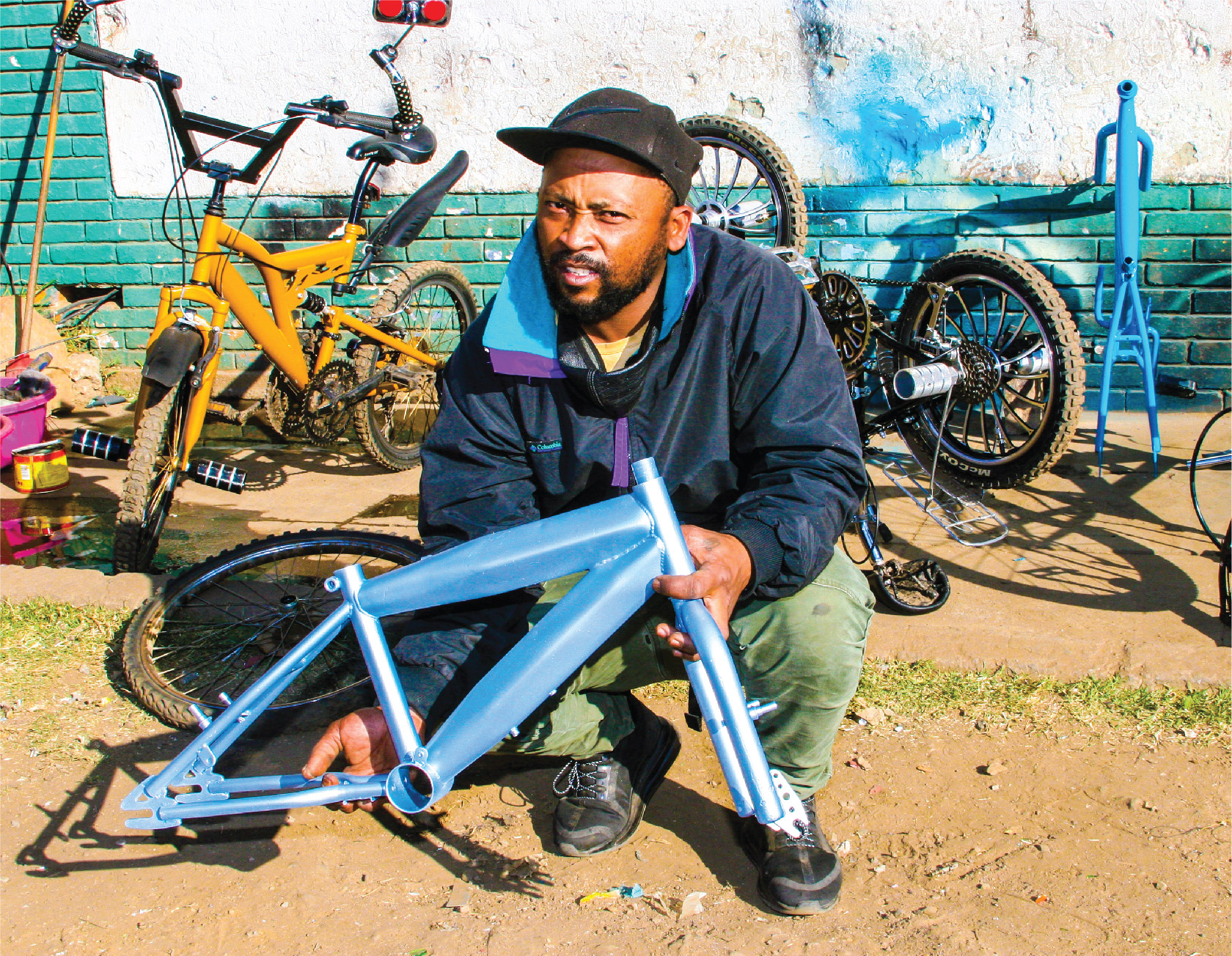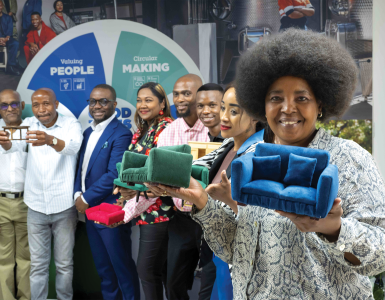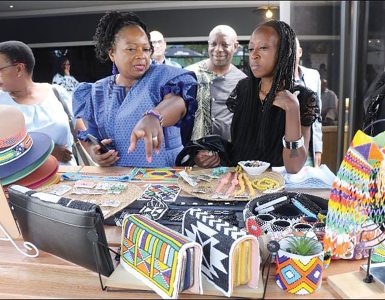BEWARE:Academic duo’s study tackles causes of acute and chronic injures prevalent in cycling…
By Jacob Mawela
Research on common injuries in cycling done by two South African academics could put the clamps on the wheels of young Soweto cyclists at the centre of a do-it-yourself fad, if heeded.
Titled, “Common injuries in cycling: Prevention, diagnosis and management”, was published in the official journal of the South African Academy of Family Practice/Primary Care by Professor Martin Schwellnus and Wayne E Derman. The two academics tackle causes of acute and chronic injuries prevalent in cycling – with poor bicycle-cyclist “fit”, a contributor to chronic injuries which can be off-set by appropriate matching of a cyclist and a bicycle.
The research conjures the common scenario in Soweto, and elsewhere, where teenage boys have introduced their own spin to recreational cycling by riding bicycles they have assembled by themselves. The fad is such that these owners of “pimped up” rides are ubiquitous on any street and road from Pimville to Protea.
The youngsters
Citing the research to make some of the boys’ conscious of the hazards lurking in the sort of non-SABS approved bicycles they ride, I approached a Pimville-based crew known as, Team Mosha. Twenty-one members strong, they surrounded me with raucous laughter, upon my questioning their habit not to wear helmets when riding around, with one intoning a commonly held viewpoint among them, “What will people say; It’s swanky to ride without one!” To whether any of them had ever been involved in a crash or injured, the adolescents were candid enough to admit to an injury having been inflicted to one of their own through a collision with a car. This was during a “ride” around Soweto, some years back – one serious to land the victim in hospital, and render him incapable of cycling again for a considerable while.
Our engagement was interspersed by a display of will-‘o-the-wisp “toys” embellished with 12-watt speakers, shiny long nuts, chrome bull bars and yellow boards emblazoned with catchy statements such as, “Inkinga yakho umona” (your problem is jealousy), etc.
Yet, scrutinised closely, some of the bikes manifested red flag traits such as dropped handlebars, saddleless bikes, bicycles not suited for their particular age group, et cetera. I asked one, Maduvha Ndou, a 17-years-old Grade 11 pupil, whether he was aware of the danger of riding around in a standing formation (his wheels had no seat) for extended distances, the question drew a blank from the youngster. For all their pragmatism – with those among them from households whose parents could not afford bikes for them, instead gathering frames from dumping sites or scrapyards, and components such as handlebars, wheels, tyres, saddles, breaks, cranks, etc., from cycle shops – they constituted “misfits” far disposed from the cyclist and bicycle synergy exhorted by the researchers.
A parent’s take
On the parents’ side, I approached 15-year-old Saint Martin de Porres Grade 9 pupil, Seeiso Kekana’s dad, Tshepo, on his take of his son’s hobby. He recalled his ire at discovering his son had dismantled a Mongoose bike, costing R2900, to overhaul it to the current contraption, whose cost kept escalating to a point that he protested that, “your bike is demanding more than my car!”
For his part, Tshepo had delayed in getting his son his first ever bicycle – at the age of 13 – after wrestling with the memory of a 1983 scooter accident involving his messenger uncle, which had affected him immensely. He had to watch his quadriplegic family member suffer for two years before succumbing to the effects of his injury. “A bicycle is not only to play, but there are implications,” Seeiso’s father cautioned.
View from the professional cyclist
I sought the viewpoint of Andrew Mclean – a multiple winner of the Cape Argus Cycle Tour who co-founded Cycle Lab – on the youngsters’ trend. Mclean weighed in, “Making bikes cool, pimping them and stimulating other youngsters to be passionate about bicycles is great. However, this cannot come at the cost of their safety.”
To the effect to the cyclist’s back caused by riding in a prolonged hunched manner with dropped handlebars, Mclean offered, “I love the idea of making bikes hip, bit like the Harley cult for cycling. However, youngsters are still growing and their stabilising muscles are not fully developed or strong enough to hold these youngsters in compromised position. Bike se-tup is not only about comfort but also safety.” About riding around sans helmets, he responded, “This in a no, no. It’s against the Law,” adding, “I’m happy to donate a few helmets.”
The experts’ analysis
I consulted Bryanston-based chiropractor, Dr Simon Workman, who also treats cyclists, to comment on images of the youngsters’ doled-up bicycles. Indeed, he confirmed that a bike’s set-up is important, adding he often referred cyclists to Cycle Lab.
Dr Workman referred me to Schwellnus and Derman’s research, which resonates with the educational context of this article. Among their findings on the subject of chronic neck pain suffered by cyclists, were predisposing factors caused by poorly conditioned upper back musculature, “dropped” handlebars, raised saddle, etc. Also, incorrect bicycle set-up (incorrect frame size, saddle height and incorrect saddle position) predisposes chronic knee pain – a common injury suffered by cyclists.
Furthermore, the duo urges that prevention of lower back pain is related mainly to proper bicycle set-up, with the adjusting of the saddle angle, saddle height, handlebar height, handlebar position and handlebar length cited as effective in reducing back pain during cycling. Parallel, they encouraged the wearing of hard-shell cycling helmets as an important measure for preventing serious acute head and neck injuries, the most serious injuries suffered by cyclists and accounting for most of the fatalities.






